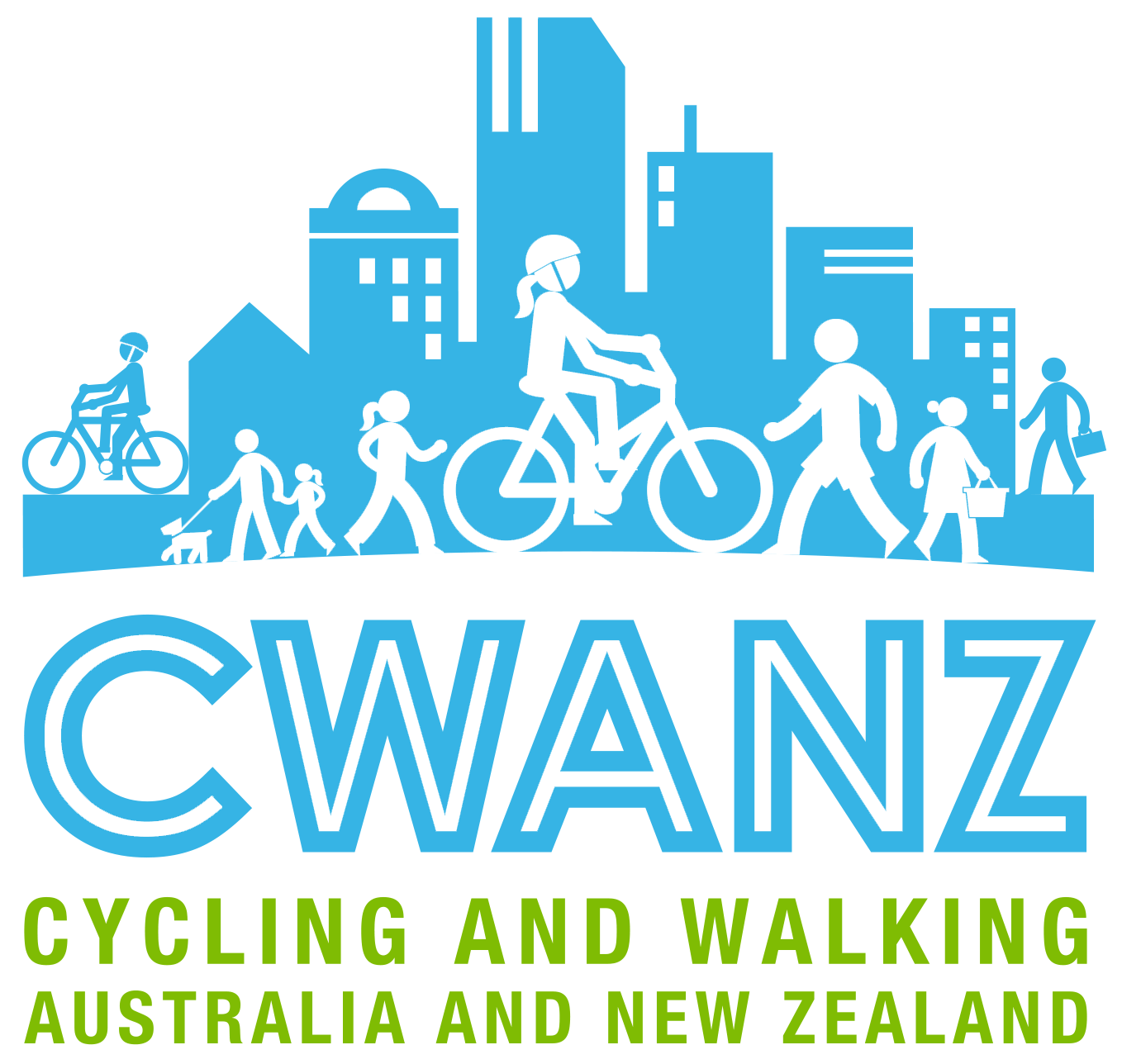Resources
This page contains some key resources on walking and cycling, including an archive of the documents produced by the Australian Bicycle Council.
| Date Added | |||
|---|---|---|---|
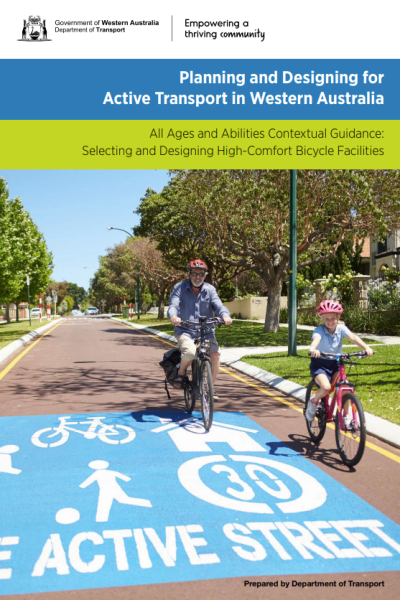 |
Planning and designing for active transport Department of Transport Western Australia Collaborating with and guiding state and local government and industry partners to plan, design and develop active transport solutions to help make it an easy choice for people of all ages and abilities to walk, wheel and ride. |
02/02/2024 | View |
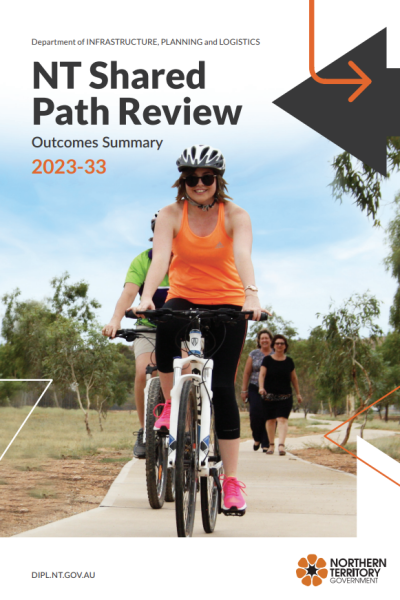 |
Northern Territory shared path network reviews Department of Infrastructure, Planning and Logistics (DIPL), Northern Territory The Department of Infrastructure, Planning and Logistics (DIPL) has completed a review of Northern Territory Government (NTG) owned shared paths across Greater Darwin, Katherine, Tennant Creek and Alice Springs. The review is key to continuing strategic development of shared paths in line with stakeholder and community needs for the next 10 years. The purpose of the review was to assess the existing NTG shared path networks and provide recommendations for:
A number of key considerations guided the review including efficiency, safety and connectivity. |
11/12/2023 | View |
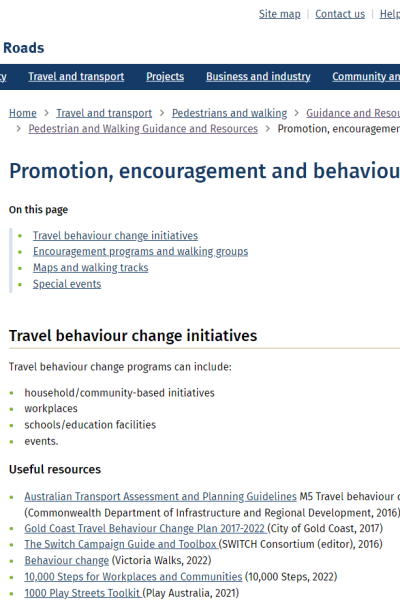 |
Promotion, encouragement and behaviour change Department of Transport and Main Roads, Queensland On this page: |
27/10/2023 | View |
 |
Universal access Department of Transport and Main Roads, Queensland On this page: |
27/10/2023 | View |
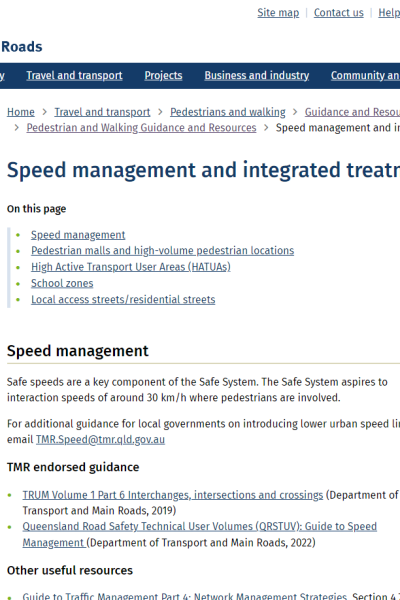 |
Speed management and integrated treatments Department of Transport and Main Roads, Queensland On this page: |
27/10/2023 | View |
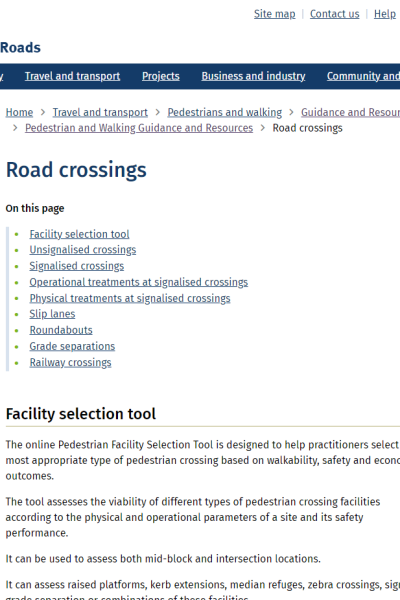 |
Road crossings Department of Transport and Main Roads, Queensland On this page: |
27/10/2023 | View |
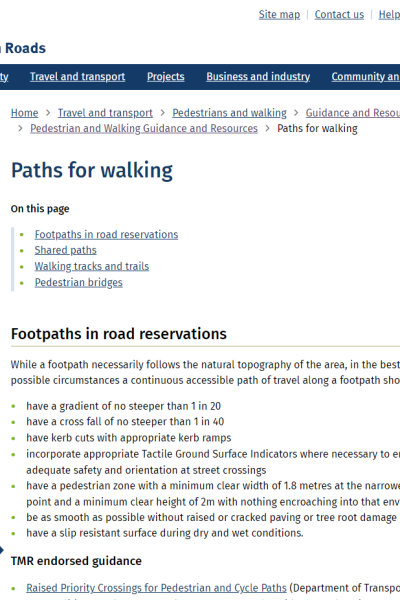 |
Paths for walking Department of Transport and Main Roads, Queensland On this page |
27/10/2023 | View |
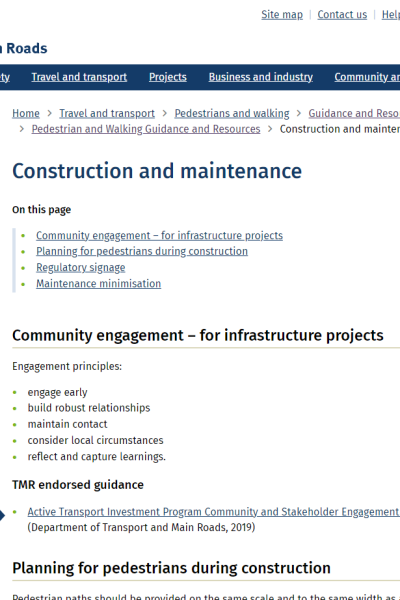 |
Construction and maintenance Department of Transport and Main Roads, Queensland On this page: |
27/10/2023 | View |
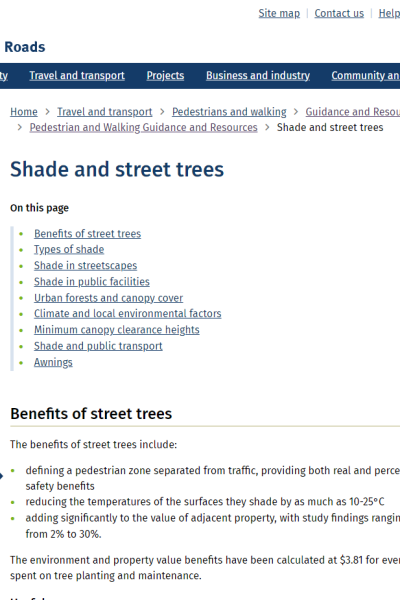 |
Shade and street trees Department of Transport and Main Roads, Queensland On this page: |
27/10/2023 | View |
 |
Pedestrian and Walking Guidance: Supporting facilities Department of transport and Main Roads, Queensland On this page: |
27/10/2023 | View |
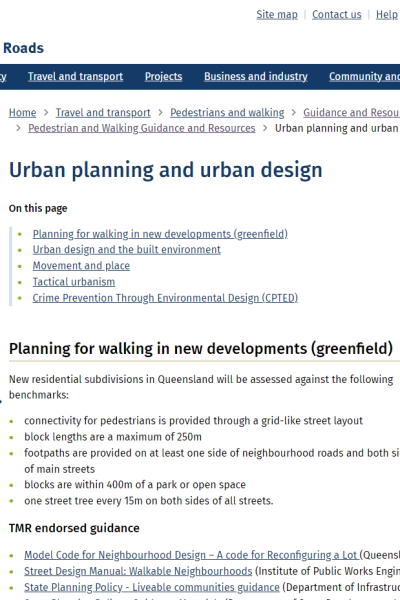 |
Urban planning and urban design Department of Transport and Main Roads, Queensland On this page: |
27/10/2023 | View |
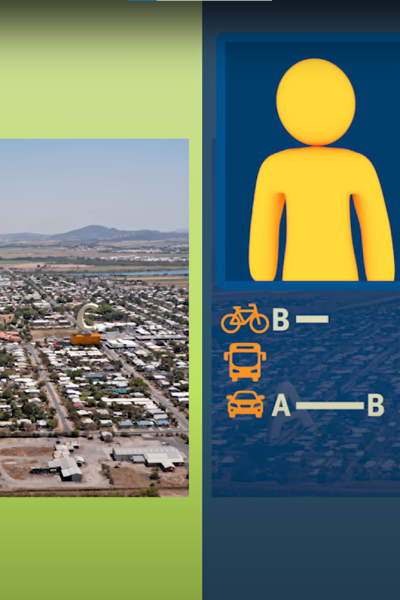 |
Walking data Department of Transport and Main Roads, Queensland On this page: |
13/10/2023 | View |
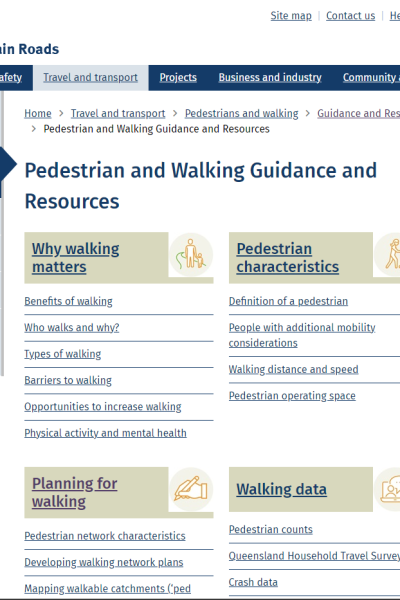 |
Pedestrian and Walking Guidance and Resources Department of Transport and Main Roads, Queensland Including:
|
13/10/2023 | View |
 |
Walking Network Planning Guidance Department of Transport and Main Roads, Queensland More people will walk when everyday destinations are connected by comfortable, direct, safe and accessible routes. Walking network plans (WNPs) are a first step to creating better places to walk. The Queensland Government is committed to achieving the Queensland Walking Strategy 2019–2029 vision of walking becoming 'an easy choice for everyone, every day'. When we talk about walking, we also include running and moving with the help of a mobility device (such as a wheelchair, mobility cane or a walking frame). The following guidance supports practitioners to prepare WNPs and a prioritised works program to make the plan a reality. |
13/10/2023 | View |
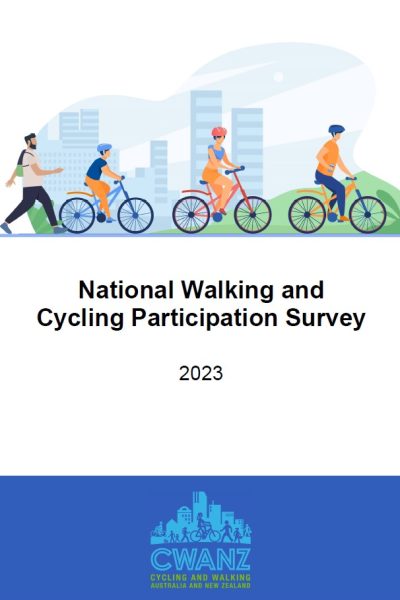 |
National Walking and Cycling Participation Survey 2023 CWANZ The National Walking and Cycling Participation Survey (NWCPS) provides insight into walking and cycling activity across Australia and is a successor to the National Cycling Participation Survey which was conducted biennially from 2011 to 2019. |
22/09/2023 | View |
 |
Pedestrian Demand Forecasting Tool Department of Transport and Main Roads, Queensland This tool provides an implementation of the three pedestrian forecasting procedures described in the TMR Pedestrian demand forecasting guideline. The guidance describes three forecasting procedures:
|
17/07/2023 | View |
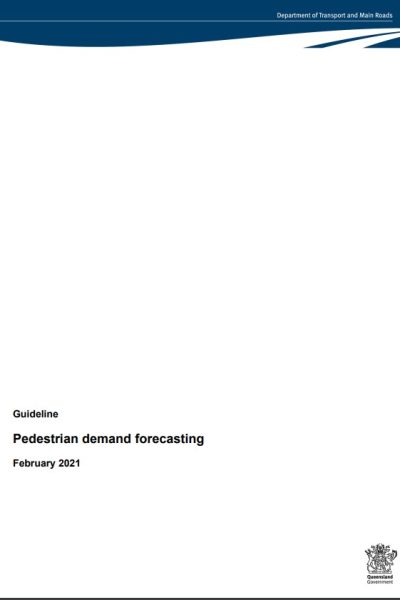 |
Pedestrian Demand Forecasting Guideline Department of Transport and Main Roads, Queensland The intent of this document is to provide guidance to practitioners to forecast demand for pedestrians
|
17/07/2023 | View |
 |
Planning for walking Department of Transport and Main Roads, Queensland Including:
|
17/07/2023 | View |
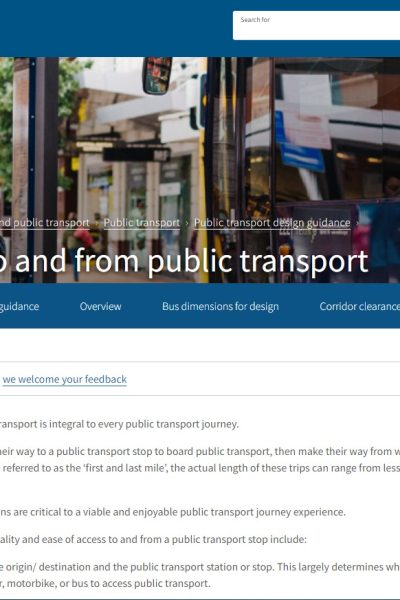 |
Getting to and from public transport Waka Kotahi NZ Transport Agency Getting to and from public transport is integral to every public transport journey. All passengers must make their way to a public transport stop to board public transport, then make their way from where they disembark to their final destination. Often referred to as the ‘first and last mile’, the actual length of these trips can range from less than 100m to many kilometres. First and last mile connections are critical to a viable and enjoyable public transport journey experience. Key issues relating to the quality and ease of access to and from a public transport stop include:
It is important that those involved in public transport planning consider the whole of the passengers' journey. When planning for public transport journeys, the following questions should be considered:
|
19/05/2023 | View |
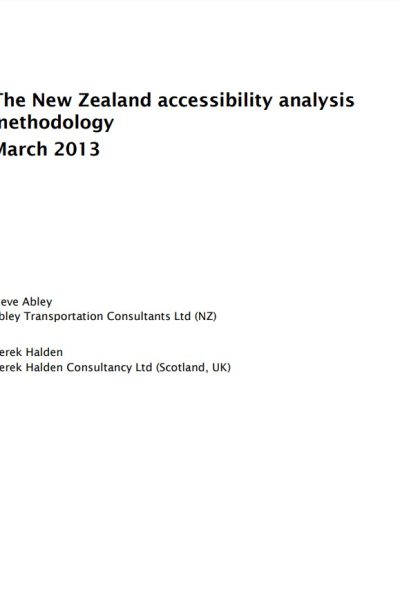 |
Research Report 512 The New Zealand accessibility analysis methodology Waka Kotahi NZ Transport Agency This research considers land use and transport accessibility drawing on international practice from the UK, Europe, USA and Australia. An objective of the research was to define accessibility and propose a methodology for how accessibility could be measured and quantified in New Zealand, both at a neighbourhood or a wider area such as a suburb, city or region. The result of the research was an understanding of other countries’ experiences developing and setting accessibility policy and the success of those approaches. This is important because if New Zealand chooses to set explicit accessibility policy, the research explains how that might be best achieved. A second result of the research was the development of a new methodology for calculating accessibility that draws on overseas and improved practice. The new methodology quantitatively measures accessibility taking into consideration different modes of travel (walk, cycle, private motor vehicle etc), travel behaviour (ideally using logistic decay functions), destinations (origin or destination based), activities (consumed or supplied) and multiple opportunities (saturations). The calculation methodology was piloted on Christchurch (a city of some 350,000 people) and the accessibility of every household quantified to a variety of destinations including doctors, supermarkets and schools. Keywords: accessibility, cycling, GIS, indicators, journey planning, methodology, modelling, networks, New Zealand, public transport, transport, walking |
19/05/2023 | View |
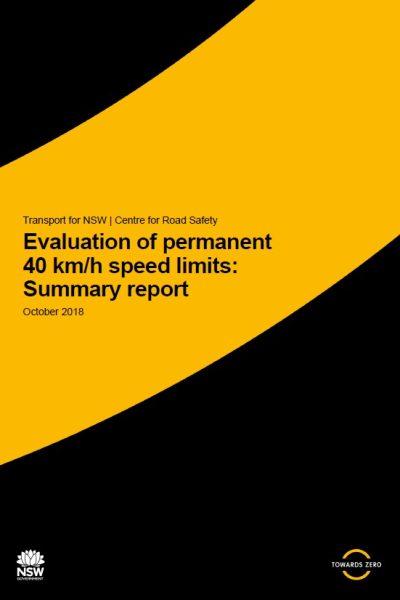 |
Evaluation of permanent 40km/h speed limits: Summary report Transport for NSW |
17/05/2023 | View |
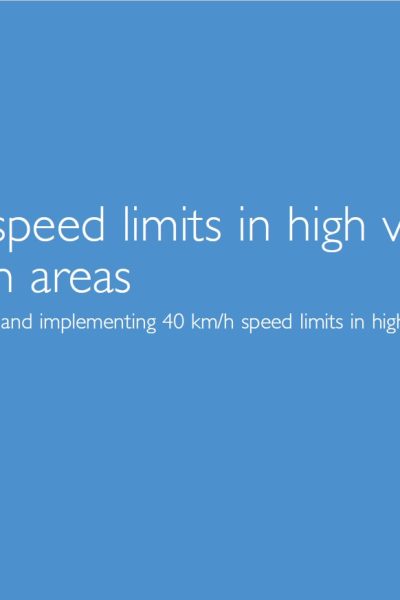 |
40 km/h speed limits in high volume pedestrian areas Transport for NSW A guide to identifying and implementing 40 km/h speed limits in high volume pedestrian areas. |
15/05/2023 | View |
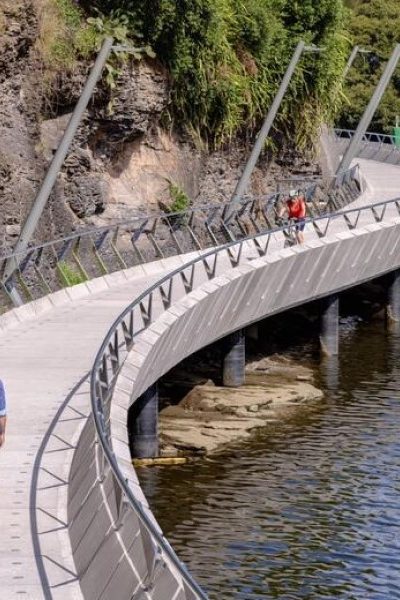 |
Get NSW Active Transport for NSW The Get NSW Active program provides local councils with funding for projects that create safe, easy and enjoyable walking and cycling trips. These trips help to relieve pressure on our roads and public transport networks and are part of a healthy lifestyle for NSW communities. |
01/05/2023 | View |
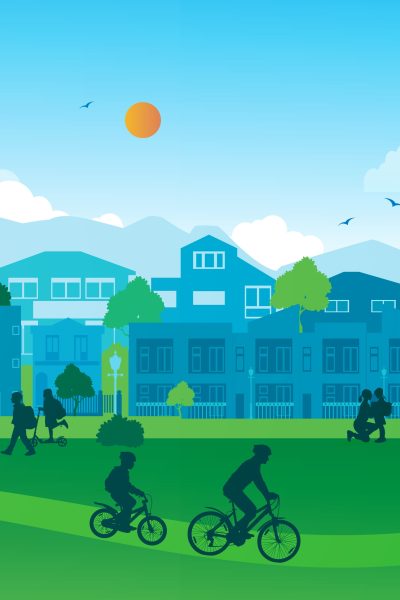 |
Active Travel to School Program: Walk to School City of Whittlesea PROGRAM FEATURES:
DATE IMPLEMENTED: Not available COST: Not available |
14/02/2023 | View |
 |
Active Travel to School Program: National Walk Safely to School Day Pedestrian Council of Australia PROGRAM FEATURES:
DATE IMPLEMENTED: Not available COST: Not available. Free for schools. RESULTS OF EVALUATION: Not available |
30/01/2023 | View |
 |
Active Travel to School Program: Active School Travel, Sunshine Coast Council Sunshine Coast Council PROGRAM FEATURES:
DATE IMPLEMENTED: Not available COST: Not available RESULTS OF EVALUATION: Not available |
30/01/2023 | View |
 |
Active Travel to School Program: Walk to School Month City of Moonee Valley PROGRAM FEATURES:
DATE IMPLEMENTED: Not available COST: Not available RESULTS OF EVALUATION: Not available |
30/01/2023 | View |
 |
Active Travel to School Program: Walk to School (VicHealth) VicHealth PROGRAM FEATURES:
DATE IMPLEMENTED: Not available COST OF PROGRAM: Not available COST FOR USERS: None RESULTS OF EVALUATION: Not available |
30/01/2023 | View |
 |
Active Travel to School Program: Way2Go Bike Ed Department for Infrastructure and Transport, South Australia PROGRAM FEATURES:
DATE IMPLEMENTED:
COST OF PROGRAM: Not available COST FOR USERS: Free for schools RESULTS OF EVALUATION: Report |
30/01/2023 | View |
 |
Active Travel to School Program: Way2Go Department for Infrastructure and Transport, South Australia PROGRAM FEATURES:
DATE IMPLEMENTED: Commenced in 2005 as Safe Routes to School, re-branded to Way2Go in 2009 COST OF PROGRAM: Not available COST FOR USERS: Free for schools RESULTS OF EVALUATION: Not available |
30/01/2023 | View |
 |
Active Travel to School Program: Go Noosa Schools Noosa Council PROGRAM FEATURES:
DATE IMPLEMENTED: Not available COST: Not available RESULTS OF EVALUATION: Not available |
30/01/2023 | View |
 |
Active Travel to School Program: Active School Travel, City of Gold Coast City of Gold Coast PROGRAM FEATURES: Schools that join the program receive a suite of resources including free toolkits, incentives and support. Including:
Educational programs:
DATE IMPLEMENTED: Not available COST: Not available RESULTS OF EVALUATION: Not available |
30/01/2023 | View |
 |
Active Travel to School Program: Active School Travel Program, Brisbane City Council Brisbane City Council PROGRAM FEATURES: The Active School Travel (AST) program offers Brisbane primary schools a suite of free resources, tools and incentives to enable students, parents, carers and teachers to leave the car at home and actively travel to school. Participating schools will receive access resources, including:
Other resources:
DATE IMPLEMENTED: 2004 COST OF PROGRAM: FY 2022-23 $699,000 COST FOR USERS: Free for schools. RESULTS OF EVALUATION: Since 2004, 168 schools and more than 127,000 students have participated in the program. Achievements in 2021:
Approximately 90% of AST committee members agreed the AST program helped to increase student physical activity levels and foster community cohesion at their school. |
30/01/2023 | View |
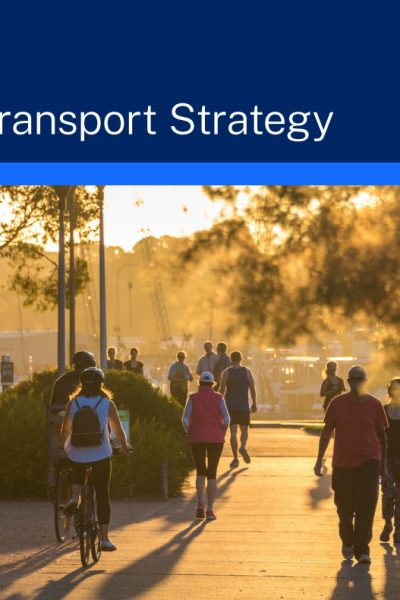 |
Active Transport Strategy Transport for NSW The NSW Government wants walking and bike riding, known as active transport, to be the preferred way to make short trips and a viable, safe and efficient option for longer trips. We estimate that more than 1.5 billion walking and bike riding trips are taken per year across New South Wales. We want to double this number in 20 years. NSW Government’s Future Transport Strategy sets the vision for safe, healthy, sustainable, accessible and integrated journeys in NSW. This Active Transport Strategy draws on the Future Transport Strategy and its vision for walking, bike riding and personal mobility. The Strategy provides a plan to guide planning, investment and priority actions for active transport across NSW. |
16/12/2022 | View |
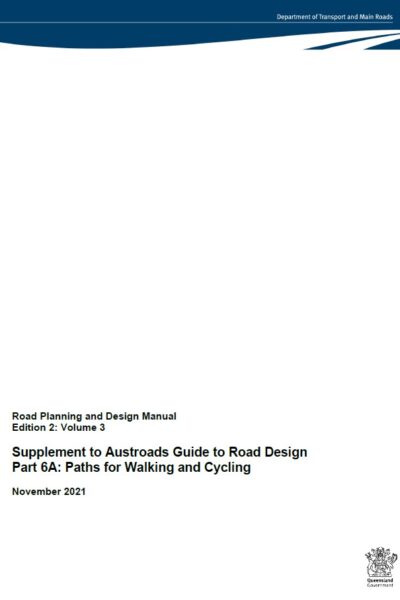 |
Road Planning and Design Manual Department of Transport and Main Roads, Queensland The Road Planning and Design Manual is the Queensland Department of Transport and Main Roads' primary reference for the planning and design of roads. It refers designers to the relevant Austroads publications for technical requirements, and outlines where Queensland Department of Transport and Main Roads practice supplements or differs from the Austroads guides. |
08/07/2022 | View |
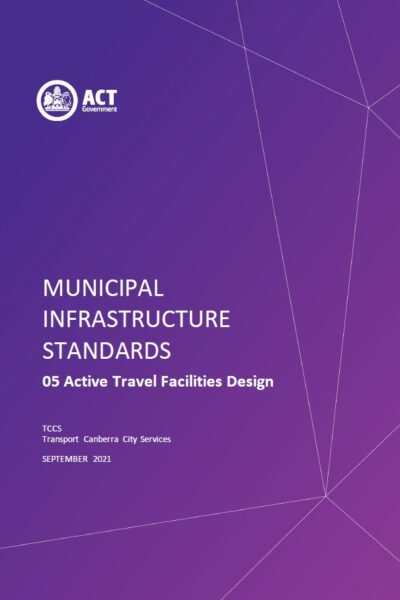 |
Municipal Infrastructure Design Standards (MIS) Transport Canberra City Services The Municipal Infrastructure Standards (MIS) utilise the AusSpec document framework. This framework provides a level of design consistency across all local government jurisdictions in Australia, and reflects the most up-to-date industry practice. A number of local and regional government jurisdictions have adopted the AusSpec document framework as the primary technical framework for their design standards. |
08/07/2022 | View |
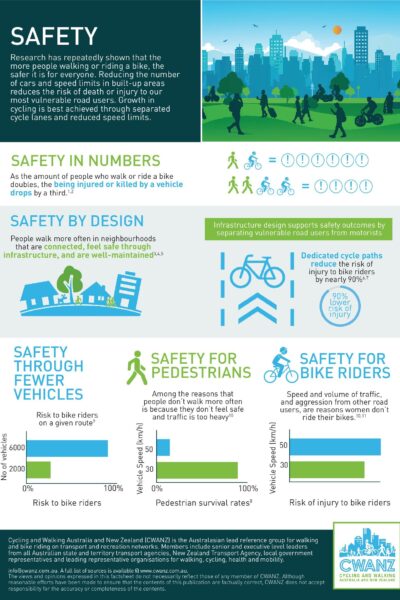 |
CWANZ Fact Sheet: Safety CWANZ Research has repeatedly shown that the more people walking or riding a bike, the safer it is for everyone. Reducing the number of cars and speed limits in built-up areas reduces the risk of death or injury to our most vulnerable road users. Growth in cycling is best achieved through separated cycle lanes and reduced speed limits. |
28/04/2022 | View |
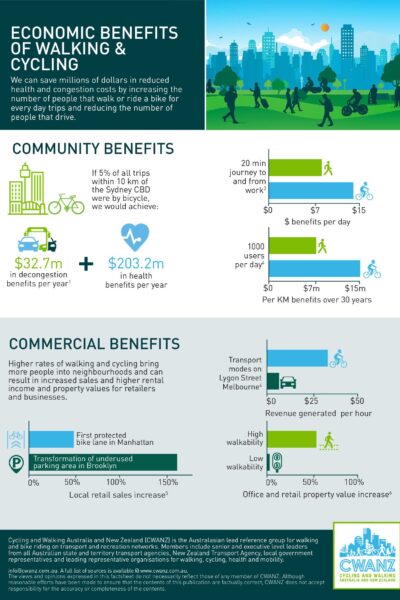 |
CWANZ Fact Sheet: Economic Benefits of Walking & Cycling CWANZ We can save millions of dollars in reduced health and congestion costs by increasing the number of people that walk or ride a bike for every day trips and reducing the number of people that drive. |
19/04/2022 | View |
 |
CWANZ Fact Sheet: Benefits of Lower Speed Limits CWANZ Benefits of lower speed limits in high activity areas and local access streets. What happens when vehicles travel more slowly in areas with lots of pedestrians and bike riders? |
19/04/2022 | View |
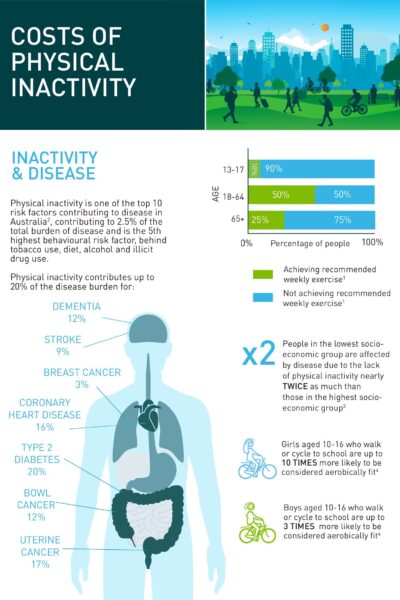 |
CWANZ Fact Sheet: Health Benefits of Active Transport CWANZ Physical inactivity is one of the top 10 risk factors contributing to disease in Australia, contributing to 2.5% of the total burden of disease and is the 5th highest behavioural risk factor, behind tobacco use, diet, alcohol and illicit drug use. |
19/04/2022 | View |
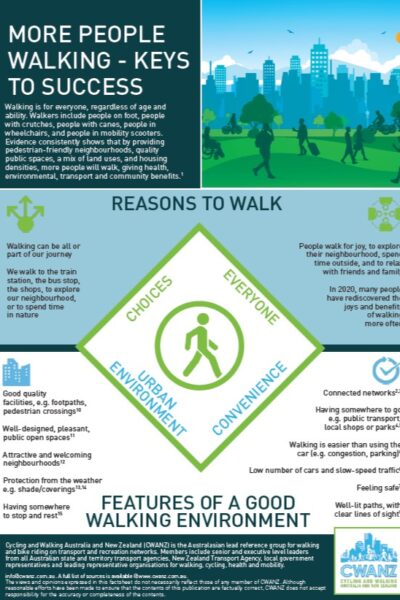 |
CWANZ Factsheet: More People Walking - Keys to Success CWANZ Walking is for everyone, regardless of age and ability. Walkers include people on foot, people with crutches, people with canes, people in wheelchairs, and people in mobility scooters. Evidence consistently shows that by providing pedestrian-friendly neighbourhoods, quality public spaces, a mix of land uses, and housing densities, more people will walk, giving health, environmental, transport and community benefits. |
13/04/2022 | View |
 |
Active Transport to School Transport for NSW |
12/04/2022 | View |
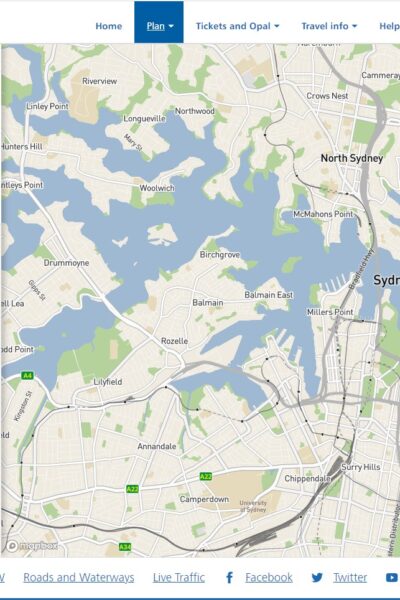 |
Trip Planner Transport for NSW |
12/04/2022 | View |
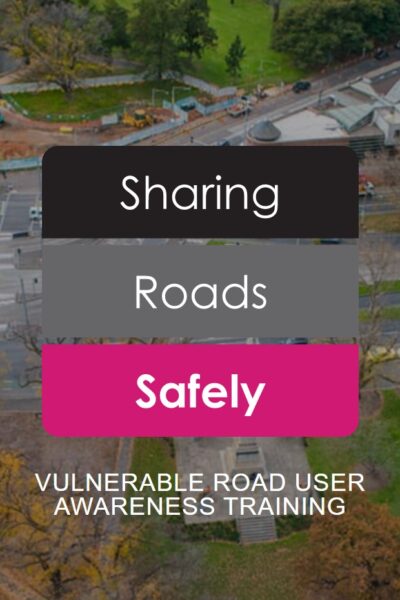 |
Sharing Roads Safely: Vulnerable Road User Training Amy Gillett Foundation Sharing Roads Safely is a training course developed suitable for heavy vehicle drivers to increase safe interactions with vulnerable road users, specifically motorbike riders, cyclists and pedestrians. Based on international best practice, the course was developed in consultation with the government, the heavy vehicle industry and vulnerable road user groups for drivers in Australia. Sharing Roads Safely is a recognised training course and meets compliance requirements for vulnerable road user awareness training.
|
07/04/2022 | View |
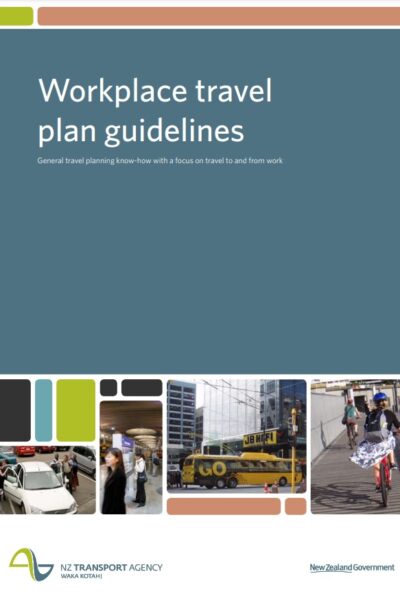 |
Travel planning toolkit guidelines and resources Waka Kotahi NZ Transport Agency The Waka Kotahi NZ Transport Agency travel planning toolkit provides you with guidelines and resources to make business trips and staff travel to and from work more efficient. You will find links to many resources to help you develop your workplace travel plan. |
07/04/2022 | View |
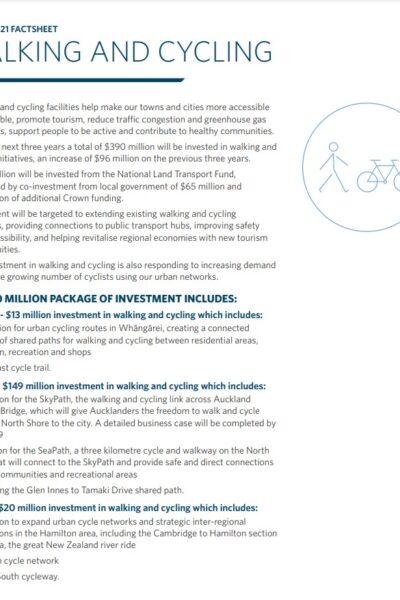 |
Walking and Cycling Improvements Waka Kotahi NZ Transport Agency Walking and cycling facilities help make cities and towns more liveable and support tourism. During 2018–21 about $390 million will be invested in walking and cycling initiatives, which will extend networks across the country and improve connections to a range of transport choices. This will improve safety and accessibility, and make a significant contribution to the revitalisation of town and city centres. Improvments will be made to walking and cycling facilities along state highway corridors up and down the country, as part of our state highway improvement programme. This includes landscaping, new bridges and underpasses to establish safe routes to encourage more people to walk or cycle. |
07/04/2022 | View |
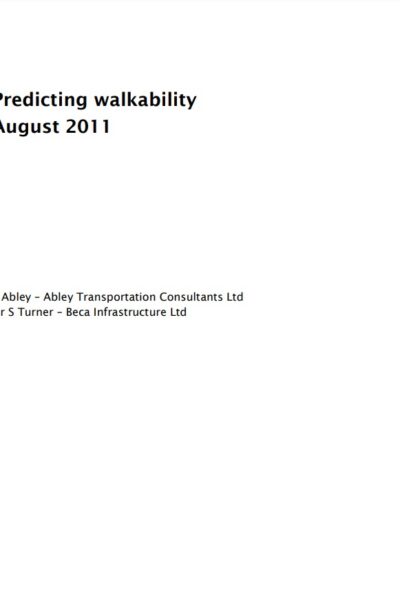 |
Research report 452 Predicting walkability Waka Kotahi NZ Transport Agency This research provides a number of mathematical formulas for predicting the quality of the walking environment from the perspective of the user using operational and physical variables. The formulas were derived by combining the perception data gathered from participants in the community street reviews with measurements of the walking environment. The two main areas that were researched to enable the derivation of formulas were:
This research describes the process for obtaining the data and deriving the formulas, and recommends the formulas most suitable for practitioner use. |
07/04/2022 | View |
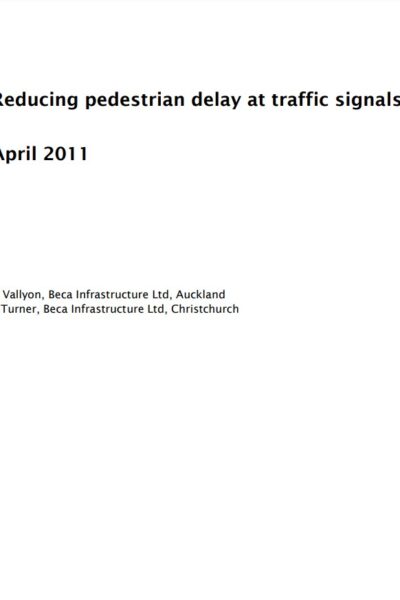 |
Research report 440 Reducing pedestrian delay at traffic signals Waka Kotahi NZ Transport Agency Since 2000, the benefits of walking as a mode of travel have been recognised by the New Zealand government in a raft of policy statements and strategies. However, the Ministry of Transport acknowledges that there are a number of issues to overcome to encourage more walking. This research focuses on one of the key issues: namely, the delay experienced by pedestrians at traffic signals. Historically, New Zealand's approach to pedestrian delay has been minimal, with pedestrian issues considered primarily from the point of view of safety, rather than level of service or amenity. At traffic signals, pedestrians are often accommodated in a way that causes the least amount of interruption to motorised traffic, and signal cycle times can be long, leading to excessive pedestrian waiting times. This can lead to frustration, causing pedestrians to violate the signals and use their own judgement to cross, resulting in safety risks. This research, which was carried out between 2007 and 2010 in Auckland, Wellington and Christchurch, used techniques such as pedestrian attitude surveys, micro-simulation modelling and a literature review of international best practice to identify methods of reducing pedestrian delay at signalised intersections in these cities. The recommendations developed during the course of the research provide both technical and policy mechanisms for improving pedestrian delay in New Zealand's central-city areas. |
07/04/2022 | View |
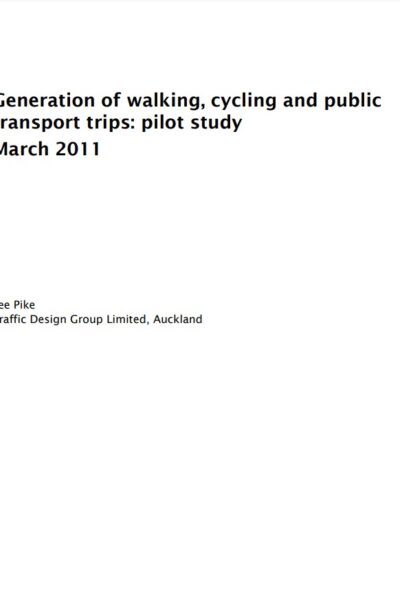 |
Research Report 439 Generation of walking, cycling and public transport trips: pilot study Waka Kotahi NZ Transport Agency This research investigated a method for collecting data relating to walk, cycle and public transport trips to land-use activities. A method needed to be developed that would require a short questionnaire to ensure higher sample rates, while also providing reliable and consistent results. This data could subsequently be used in calculating trip rates for walk, cycle and public transport trips, when combined with trip rate units such as floor area. Multi-modal trip data has been collected for some time in the UK. The survey method developed in this research was simpler than the UK method by interviewing in only one direction for the vast majority of land uses, apart from residential where the recommended method was to interview in both directions. A face-to-face questionnaire method was developed over a series of different site surveys in Auckland, Wellington and Christchurch during 2010. The research also identified that collecting non-car mode trip information through purely observer methods was not sufficiently accurate and that simple questionnaire surveys were necessary with clear instructions from the survey organiser to ensure all relevant information would be collected. |
07/04/2022 | View |
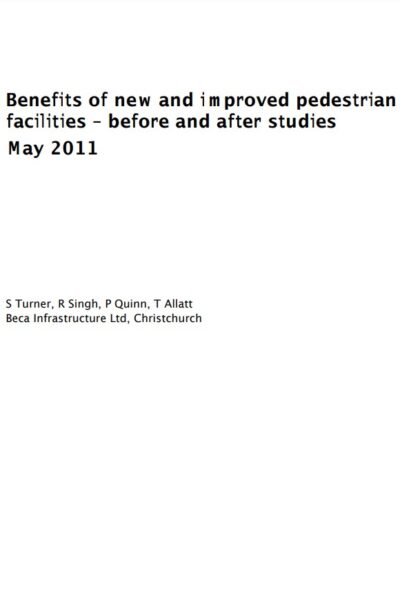 |
Research report 436 Benefits of new and improved pedestrian facilities - before and after studies Waka Kotahi NZ Transport Agency Walking is an essential mode of transport. New and improved pedestrian facilities promote walking and provide greater access and mobility within our communities. The NZ Transport Agency has recently updated the procedures for the evaluation of pedestrian improvement projects. The benefit factor applying to new pedestrian trips was increased from $0.50 to $2.70/km, making pedestrian facility improvement projects more economically viable. Thus, estimating the increase in pedestrian flows (as opposed to simply recording existing pedestrian flows) is now important in the economic evaluation of new or improved facilities. This research analysed case studies at eight New Zealand sites where the implementation of new pedestrian facilities (or the improvement of existing facilities) led to increased pedestrian usage and improved perception of the sites. The study recorded pedestrian rates both before and after facility implementation, and analysed accompanying factors such as safety, delay and directness. It also tried to develop an expected pedestrian-usage model, based on before and after data analysis, for planners and funding agents to use when planning new or improved facilities, and for use in project evaluation. Finally, a monitoring database containing before and after pedestrian count data for various new and improved pedestrian facilities, along with a list of the accompanying factors mentioned above, was developed for future use. |
07/04/2022 | View |
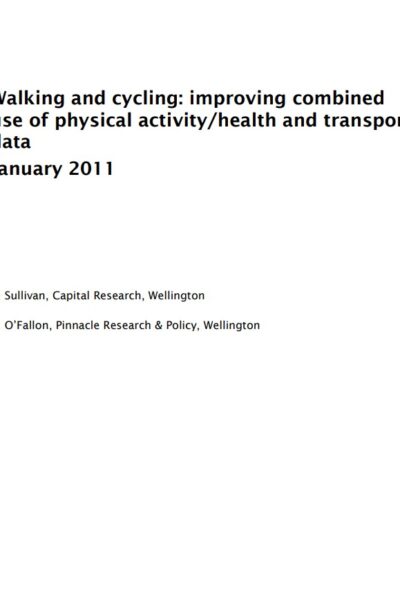 |
Research Report 435 Walking and cycling: improving combined use of physical activity/health and transport data Waka Kotahi NZ Transport Agency SPARC's Active New Zealand Survey (ANZS) is a high-quality nationwide survey of over 4000 adults collected through face-to-face interviews over 12 months in 2007/08. Although collected mainly to measure levels of sport/recreation activity and to quantify physical activity in general, it includes data of interest to the transport sector on walking and cycling.
|
07/04/2022 | View |
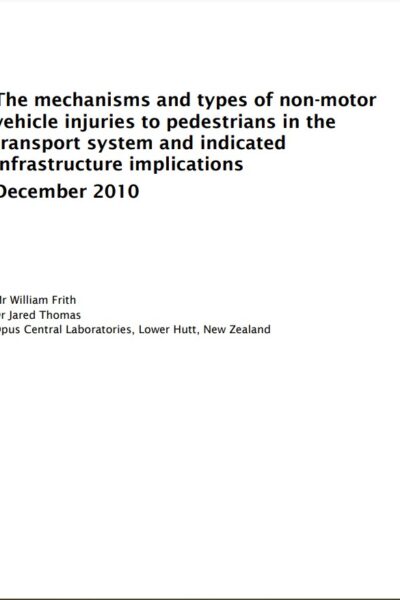 |
Research Report 431 The mechanisms and types of non-motor vehicle injuries to pedestrians in the transport system and indicated infrastructure implications Waka Kotahi NZ Transport Agency Research carried out in 2008-2010 examined the quantum and causes of non-motor vehicle injuries to pedestrians through a structured interview survey. Pedestrians sustaining injuries in locations away from the road network (eg in parks) were excluded, as the emphasis was on the role of road and footpath features. The highest proportion of trips and falls (34%) was sustained while stepping over a kerb. A further 18% were caused by irregularities in the path or road surface. Factors that amplified the severity of injuries included the road or path surface, pedestrians' inattention, type of footwear worn, and whether walking or running. Two main issues were identified from the study. These were:
The study recommends improving the definition of kerbing in key pedestrian areas and improving the maintenance regime of footpaths and roads used by pedestrians, eg crossings. The study also found that it is necessary to instigate research to provide improved data and analysis tools to prioritise such countermeasures vis-a-vis other uses of road safety funds and improved data for input into such analysis tools. Further, a national guide is needed for pedestrian road safety audits and inspections covering both motor vehicle and non-motor vehicle risk. |
07/04/2022 | View |
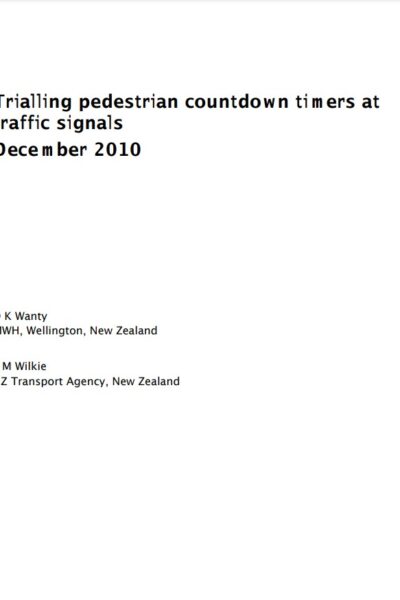 |
Research report 428 Trialling pedestrian countdown timers at traffic signals Waka Kotahi NZ Transport Agency The overall research objective was to evaluate changes in pedestrian safety and traffic efficiency from installing pedestrian countdown timers. The study analysed pedestrian behaviour and safety before and after the installation of a trial countdown timer at the intersection of Queens Street, Bunny Street and Margaret Street in Lower Hutt in July 2007. The results were compared with the 2006/07 trial at the Queen Street/Victoria Street intersection in Auckland CBD and showed very different results. The Auckland city trial indicated that, if placed in suitable locations, pedestrian countdown signals were associated with pedestrian behaviour change that enhanced safety. This study in Lower Hutt demonstrated that the observed pedestrian safety decreased as the percentage of both late starters and late finishers increased, although this was likely to be due to the nature of the intersection with one particularly long diagonal crossing coupled with the allocated phase times. In contrast, perceived pedestrian safety increased with the installation of the countdown timers. |
07/04/2022 | View |
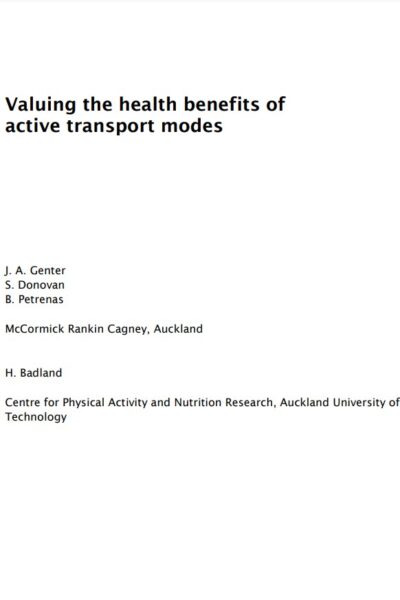 |
Research Report 359 Valuing the health benefits of active modes Waka Kotahi NZ Transport Agency This report seeks to provide a per-kilometre value for the health benefits of active transport modes (such as walking and cycling) that is compatible with the Land Transport New Zealand Economic Evaluation Manual Volume 2 (EEM2). The first two sections of the report begin by explaining the scope of the project and the background. Section 3 investigates the evidence of the connection between physical activity and health outcomes. Section 4 clarifies the role of active transport modes as physical activity, and reports the New Zealand-specific data about active transport mode engagement. Section 5 gives a brief comparative summary of the literature review of cost-benefit analyses and valuation techniques used overseas to value the health benefits of active modes. This report uses population attributable fractions (PAF) to estimate the annual burden of mortality and morbidity costs per inactive adult. Annual estimates of the costs of inactivity are applied to the New Zealand adult population using a weighted sum to establish a per-kilometre value for each mode. The valuation presented in this report is limited by a poverty of data, but the final values are considered to be a reasonable estimate of the health benefits of active modes. While further research is recommended to obtain more precise estimates of the costs of inactivity in New Zealand, it is considered that the values presented in this report are a sound interim estimate for inclusion in the EEM2. |
07/04/2022 | View |
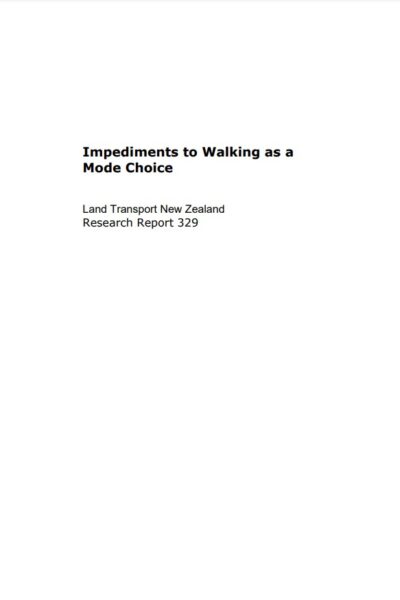 |
Research Report 329 Impediments to walking as a mode choice Waka Kotahi NZ Transport Agency Conducted in 2005, this study evaluates a case-control design of contrasts between walkers and drivers to address factors influencing the uptake of walking as a mode choice. With samples drawn from Auckland and Wellington, New Zealand, this research uses a 62-item survey to examine a number of factors: fear of crime; trip-chaining/car dependency; weather; distance/time; social pressure, fatigue and fitness, parking charges, enjoyment of walking, inconvenience, and geography. To avoid factors such as car dependency or the inability to walk, participants are selected because they live a short distance from public transport parking facilities. The group of drivers demonstrate an irregular break in car dependency by driving their cars to the station in order to use public transport. The results indicate that for parking facilities, convenience creates demand. Poor weather has an influence on the decision to drive, and fine weather improves the likelihood of walking. Previous studies claim decisions to walk are impeded by certain factors. While location effects are observed between the groups, these results suggest that such factors are in fact inconsequential. |
07/04/2022 | View |
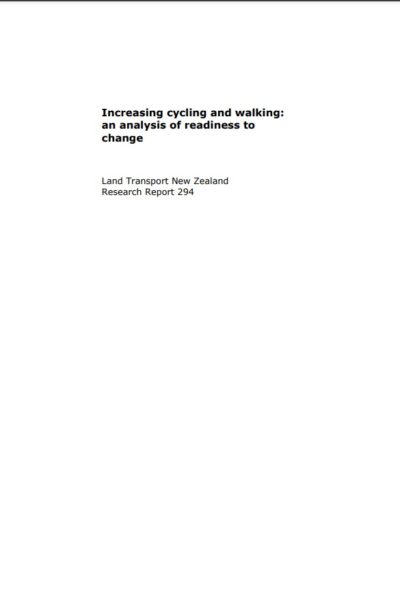 |
Research Report 294 Increasing cycling and walking: an analysis of readiness to change Waka Kotahi NZ Transport Agency In 2003, Sport and Recreation New Zealand (SPARC) and the Cancer Society of New Zealand commissioned a major social marketing survey to segment adult New Zealanders in terms of physical activity and healthy eating habits. The questionnaire included several transport-related questions. The resulting ‘Obstacles to Action’ database contains responses from over 8000 people aged 16 or over. |
07/04/2022 | View |
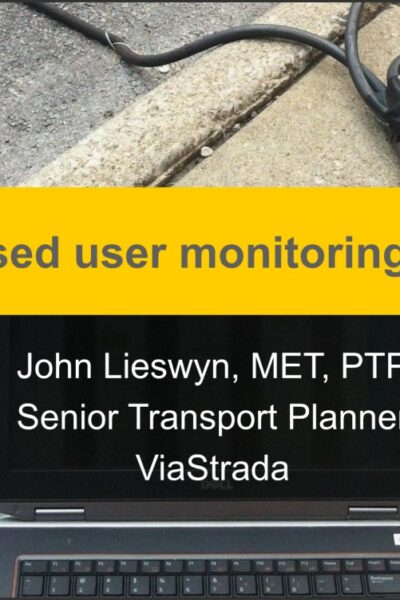 |
Non-motorised user monitoring technology ViaStrada |
07/04/2022 | View |
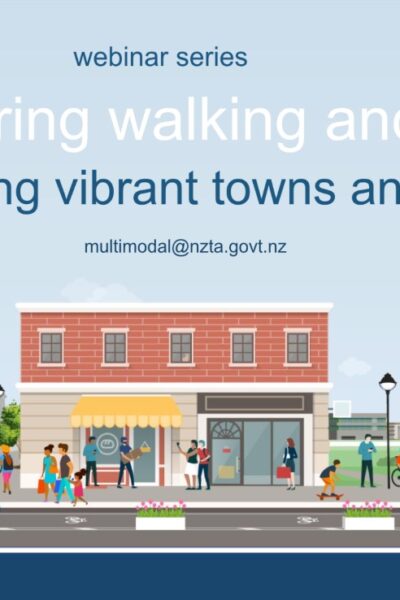 |
Monitoring Walking and Cycling: Creating Vibrant Towns and Cities Waka Kotahi NZ Transport Agency |
07/04/2022 | View |
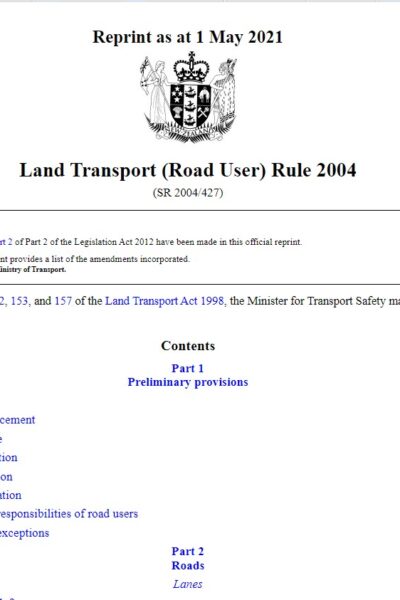 |
Land Transport (Road User) Rule 2004 Waka Kotahi NZ Transport Agency This rule establishes the rules under which traffic operates on roads. It applies to all road users, whether they are drivers, riders, passengers, pedestrians, or leading or droving animals. |
07/04/2022 | View |
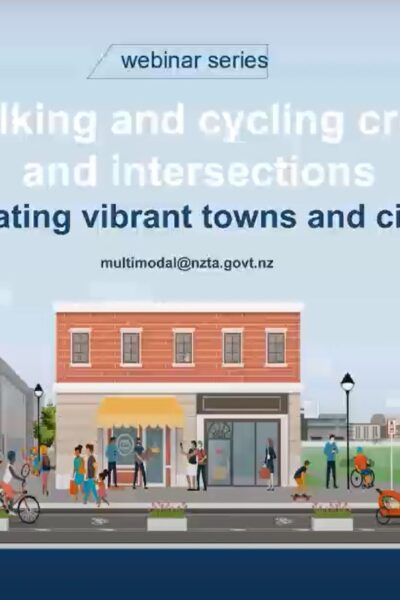 |
Safe walking and cycling treatments for intersections and crossings Waka Kotahi NZTransport Agency Waka Kotahi NZTransport Agency and the Transportation Group are hosting a series of free webinars focused on creating vibrant towns and cities. This webinar aims to introduce some of the current state-of-the-art thinking around these safety measures for our active modes. For more information on the ‘Creating vibrant towns and cities’ webinar series, visit www.nzta.govt.nz/creating-vibrant-towns-and-cities |
07/04/2022 | View |
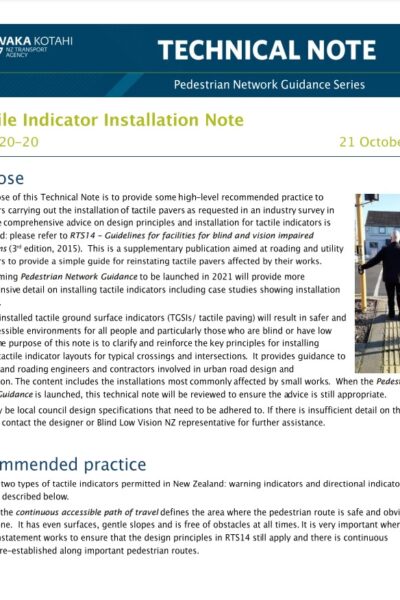 |
Tactile Indicator Installation Note Waka Kotahi NZ Transport Agency The purpose of this technical note is to provide some high-level recommended practice to contractors carrying out the installation of tactile pavers as requested in an industry survey in 2018. This is a supplementary publication aimed at roading and utility contractors to provide a simple guide for reinstating tactile pavers affected by their works. |
19/10/2021 | View |
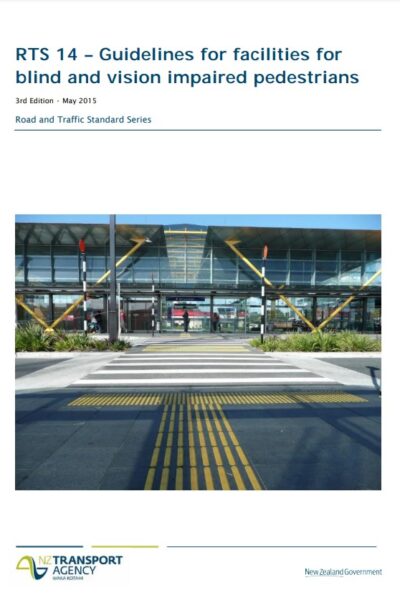 |
RTS14 Guidelines for facilities for blind and vision impaired pedestrians Waka Kotahi NZ Transport Agency RTS 14 is the official guide that ensures that design and operation of roads and paths caters for blind and vision impaired pedestrians. It also takes into account the needs of people with impaired mobility. It provides detailed requirements for a continuous accessible path, tactile ground surface indicators and audible tactile traffic signal features. |
19/10/2021 | View |
 |
Bridging the Gap: NZTA Urban Design Guidelines Waka Kotahi NZ Transport Agency The guidelines seek to improve the understanding of what good urban design means in a transport project. The guidelines are intended for consultants, contractors, project managers, stakeholders and the community who participate in the planning, design, construction and maintenance of our transport networks. They are also intended for other Transport Agency staff whose work and actions affect urban design outcomes. |
19/10/2021 | View |
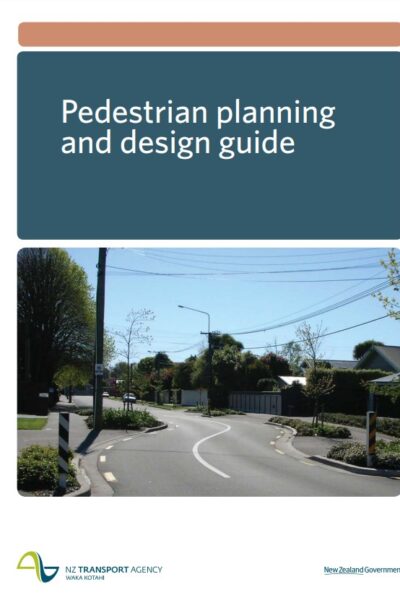 |
Pedestrian Planning and Design Guide Waka Kotahi NZ Transport Agency The Pedestrian planning and design guide is New Zealand's comprehensive official guide to planning and design for walking. It sets out ways to improve New Zealand’s walking environment |
19/10/2021 | View |
 |
NZ Road Code Information for Pedestrians Waka Kotahi NZ Transport Agency As a pedestrian, it’s important that you follow the road rules and guidelines. They will help ensure your safety when you’re walking near roads or crossing the road. |
19/10/2021 | View |
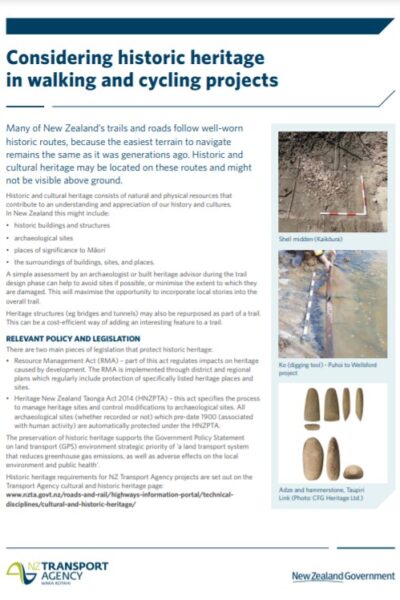 |
Considering Historic Heritage in Walking and Cycling Projects Waka Kotahi NZ Transport Agency The draft Handbook for tactical urbanism has been developed as a tool to help councils and communities deliver tactical urbanism projects to a high standard, using a collaborative best-practice approach. |
07/10/2021 | View |
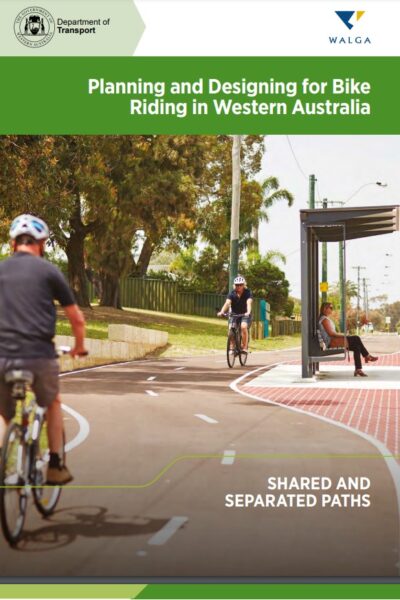 |
Shared and Separated Path Guidelines Department of Transport WA This document provides practitioners with guidance surrounding the planning and design of shared and separated paths in Western Australia to enable the safe and efficient movement of bicycle riders of all ages and abilities. It is intended to be a convenient and practical reference guide aimed at practitioners with varying levels of experience. |
06/10/2021 | View |
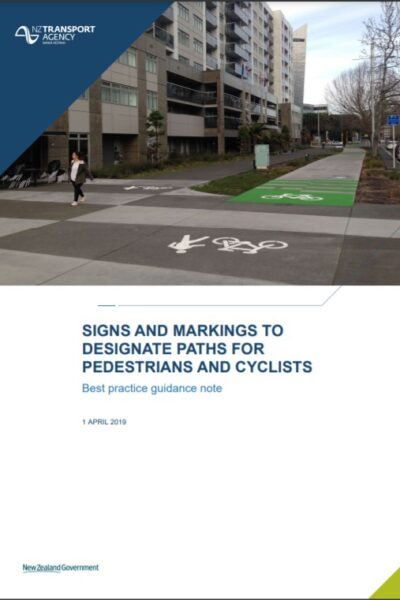 |
Signs and markings to designate paths for pedestrians and cyclists Waka Kotahi NZ Transport Agency Guidance on where and how to use markings and/or signs that designate paths for pedestrians and/or cyclists. |
30/09/2021 | View |
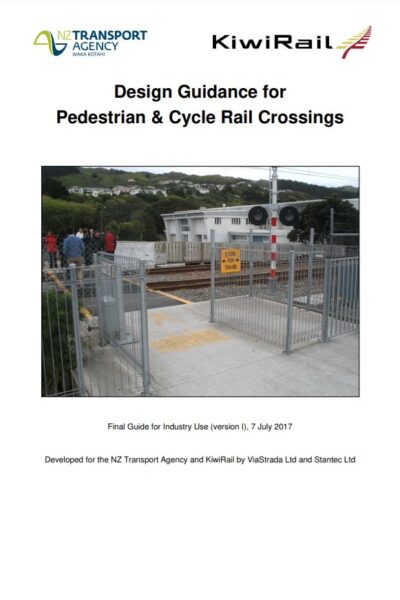 |
Design Guidance for Pedestrian and Cycle Rail Crossings Waka Kotahi NZ Transport Agency Waka Kotahi NZ Transport Agency and KiwiRail have been leading the development of a design guide for pedestrian and cycleway treatment at level crossings. The guide will improve safety, usability, compliance, consistency and will simplify the design process. |
21/09/2021 | View |
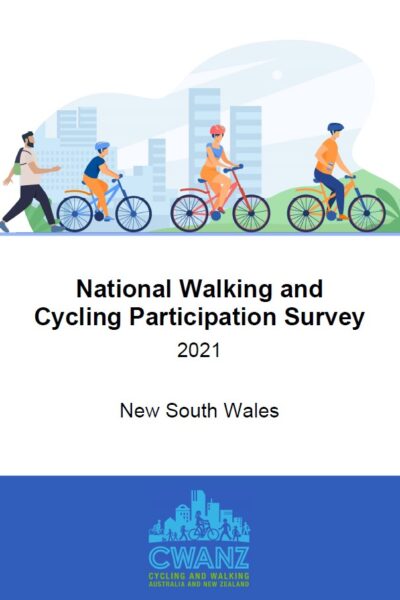 |
National Walking and Cycling Participation Survey 2021 - NSW Cycling and Walking Australia and New Zealand The National Walking and Cycling Participation Survey provides insight into walking and cycling activity across Australia and is a successor to the National Cycling Participation Survey which was conducted biennially from 2011 to 2019. |
02/09/2021 | View |
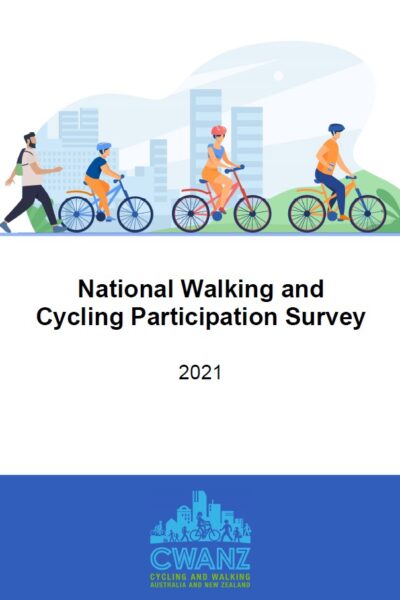 |
National Walking and Cycling Participation Survey 2021 - Final Report Cycling & Walking Australia and New Zealand The National Walking and Cycling Participation Survey (NWCPS) provides insight into walking and cycling activity across Australia and is a successor to the National Cycling Participation Survey which was conducted biennially from 2011 to 2019. |
02/09/2021 | View |
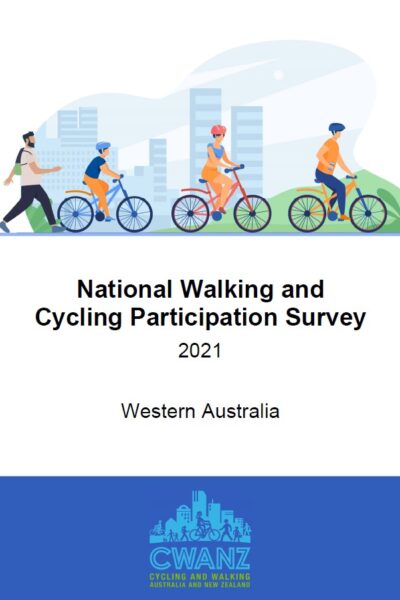 |
National Walking and Cycling Participation Survey 2021 - WA Cycling and Walking Australia and New Zealand The National Walking and Cycling Participation Survey (NWCPS) provides insight into walking and cycling activity across Australia and is a successor to the National Cycling Participation Survey which was conducted biennially from 2011 to 2019. |
31/08/2021 | View |
 |
National Walking and Cycling Participation Survey 2021 - Victoria Cycling and Walking Australia and New Zealand The National Walking and Cycling Participation Survey (NWCPS) provides insight into walking and cycling activity across Australia and is a successor to the National Cycling Participation Survey which was conducted biennially from 2011 to 2019. |
31/08/2021 | View |
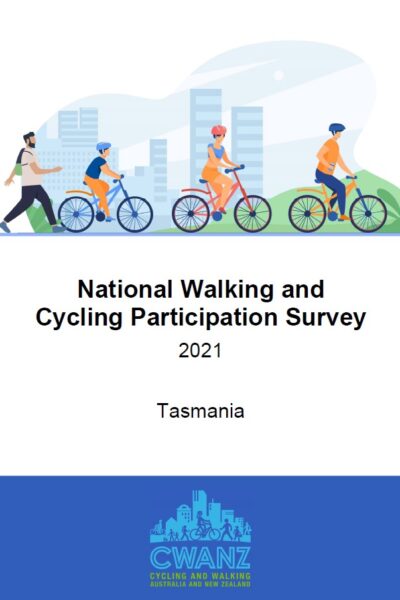 |
National Walking and Cycling Participation Survey 2021 - Tasmania Cycling and Walking Australia and New Zealand The National Walking and Cycling Participation Survey (NWCPS) provides insight into walking and cycling activity across Australia and is a successor to the National Cycling Participation Survey which was conducted biennially from 2011 to 2019. |
31/08/2021 | View |
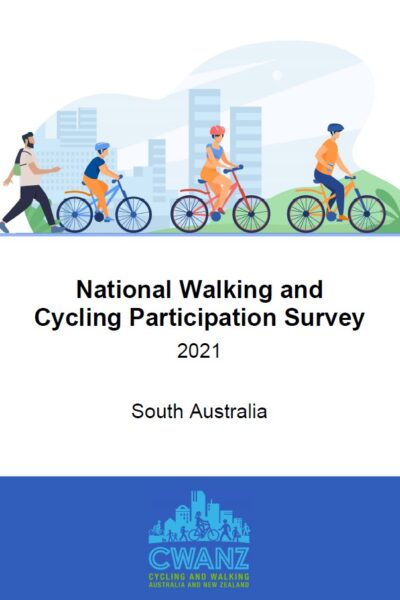 |
National Walking and Cycling Participation Survey 2021 - SA Cycling and Walking Australia and New Zealand The National Walking and Cycling Participation Survey (NWCPS) provides insight into walking and cycling activity across Australia and is a successor to the National Cycling Participation Survey which was conducted biennially from 2011 to 2019. |
31/08/2021 | View |
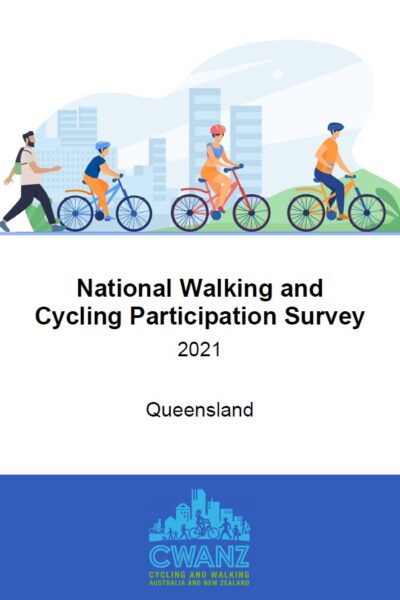 |
National Walking and Cycling Participation Survey 2021 - Queensland Cycling and Walking Australia and New Zealand The National Walking and Cycling Participation Survey (NWCPS) provides insight into walking and cycling activity across Australia and is a successor to the National Cycling Participation Survey which was conducted biennially from 2011 to 2019. |
31/08/2021 | View |
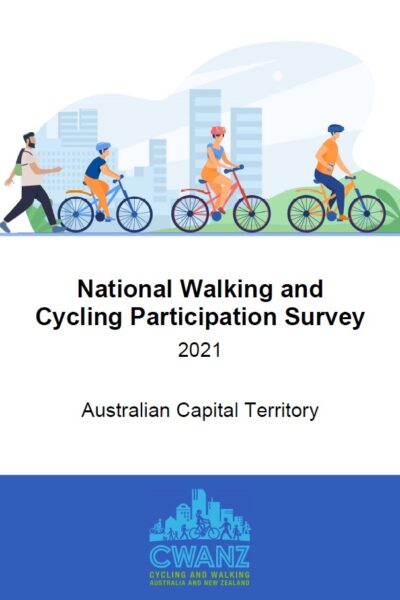 |
National Walking and Cycling Participation Survey 2021 - ACT Cycling and Walking Australia and New Zealand The National Walking and Cycling Participation Survey (NWCPS) provides insight into walking and cycling activity across Australia and is a successor to the National Cycling Participation Survey which was conducted biennially from 2011 to 2019. |
31/08/2021 | View |
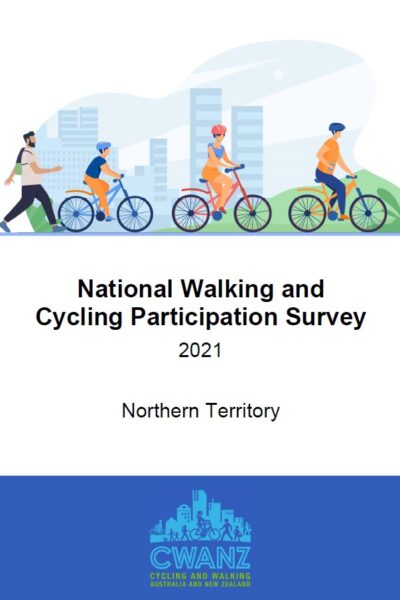 |
National Walking and Cycling Participation Survey 2021 - NT Cycling and Walking Australia and New Zealand The National Walking and Cycling Participation Survey (NWCPS) provides insight into walking and cycling activity across Australia and is a successor to the National Cycling Participation Survey which was conducted biennially from 2011 to 2019. |
31/08/2021 | View |
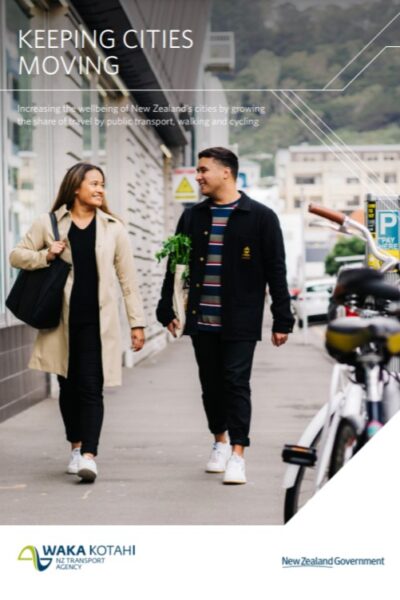 |
Keeping Cities Moving Waka Kotahi NZ Transport Agency Waka Kotahi NZ Transport Agency has developed a plan to deliver on social, environmental and economic outcomes by growing the share of travel by public transport, walking and cycling (also known as mode shift). |
04/08/2021 | View |
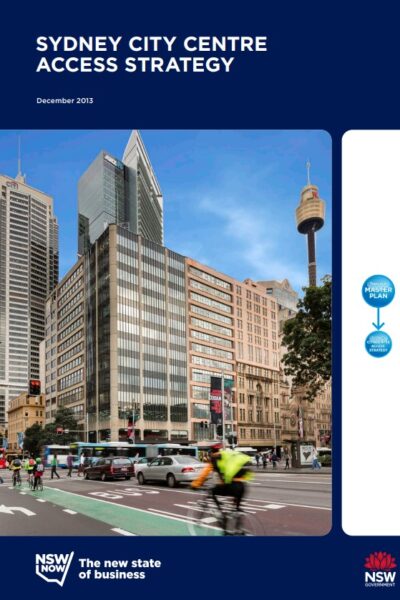 |
Sydney City Centre Access Strategy Transport for NSW The Sydney City Centre Access Strategy gets our city centre moving, addresses growth and will lead to increased investment for our future. |
03/08/2021 | View |
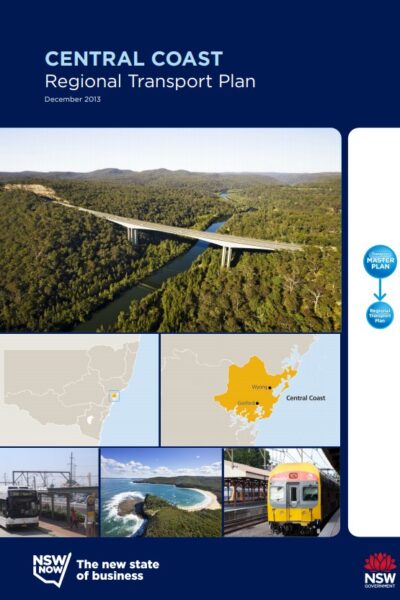 |
NSW Regional Transport Plans Transport for NSW Major gains on key transport infrastructure and services for the region’s growing communities. Regions: |
03/08/2021 | View |
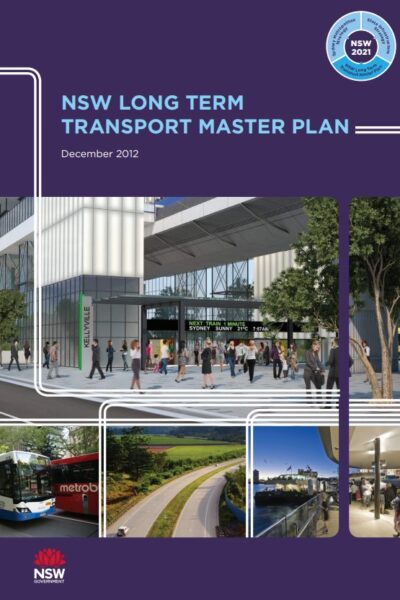 |
NSW Long Term Transport Master Plan Transport for NSW The NSW Long Term Transport Master Plan sets the framework for the NSW Government to deliver an integrated, modern transport system that puts the customer first. The Master Plan plays two fundamental roles. First, it identifies the challenges that the transport system in NSW needs to address to support the State’s economic and social performance over the next 20 years. It guides decision-makers to prioritise actions that address the most pressing challenges. |
03/08/2021 | View |
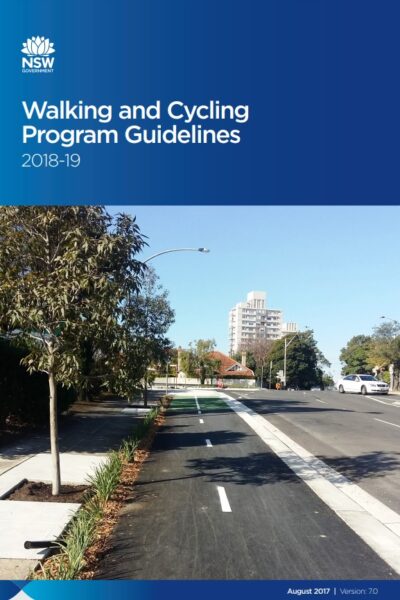 |
Walking and Cycling Program Guidelines Transport for NSW These guidelines outline the priority weighting system that will be used to assess walking and cycling proposals submitted to the NSW Government for funding. |
03/08/2021 | View |
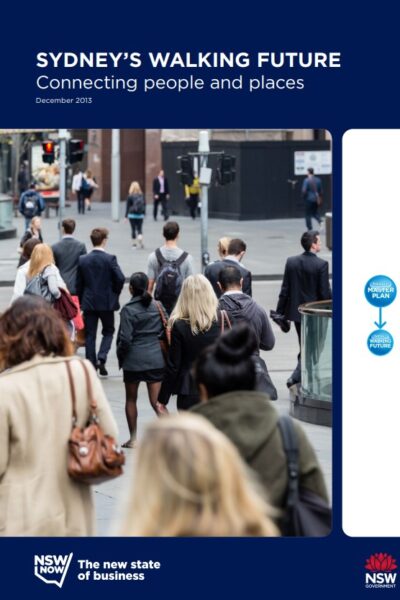 |
Sydney's Walking Future Transport for NSW The NSW Government’s goal is to get people in Sydney walking more through actions that make it a more convenient, better connected and safer mode of transport. The more people walk, the more socially engaged the community becomes and the safer people feel when walking for transport. |
03/08/2021 | View |
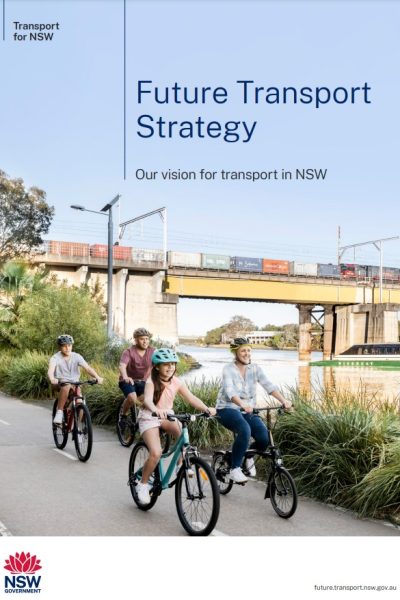 |
Future Transport Transport for NSW Future Transport sets the direction for connecting people, communities and businesses in NSW to provide a successful and thriving future. |
03/08/2021 | View |
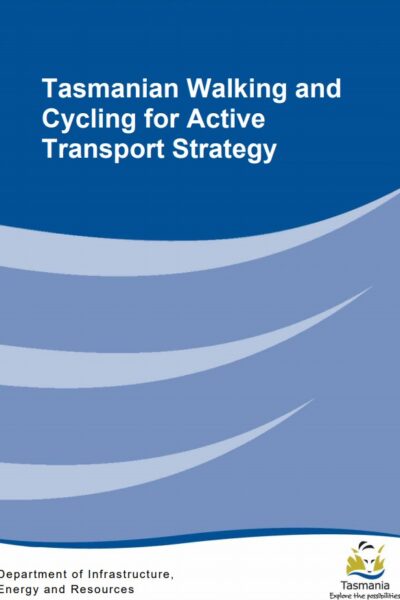 |
Tasmanian Walking and Cycling for Active Transport Strategy Department of State Growth The Tasmanian Walking and Cycling for Active Transport Strategy is a key component of the Tasmanian Urban Passenger Transport Framework, which aims to promote walking and cycling as viable and desirable forms of transport through improved infrastructure, land use planning and behavioural change. The Strategy is intended to guide development of walking and cycling as transport options in our urban areas over the long-term by creating a more supportive transport system for pedestrians and cyclists. |
30/07/2021 | View |
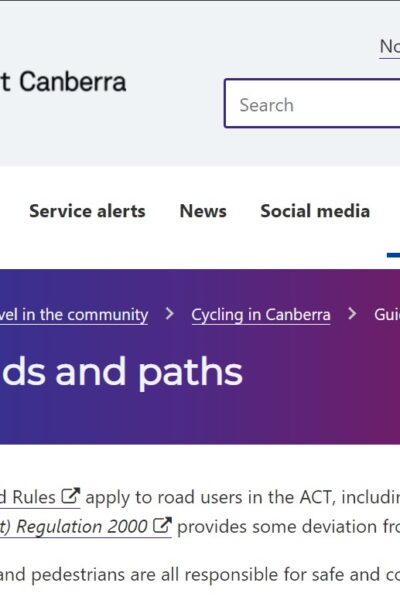 |
Guide to Sharing Roads and Paths Transport Canberra and City Services The Australian Road Rules apply to road users in the ACT, including cyclists. The ACT's Road Transport (Safety and Traffic Management) Regulation 2000 provides some deviation from these, specific for cyclists in the ACT. |
22/07/2021 | View |
 |
Active Commuting Transport Canberra and City Services Re-think your work journey to save time and money. Active travel is a great way to incorporate regular physical exercise into your daily routine. |
22/07/2021 | View |
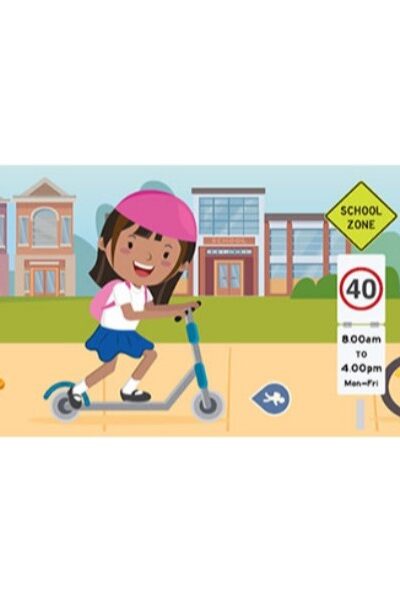 |
Active Travel Programs Transport Canberra and City Services School environments are busy during the morning and afternoon peak periods. The best way to reduce congestion and increase safety in these environments is to encourage more children to use active travel, which includes walking, riding or public transport. |
21/07/2021 | View |
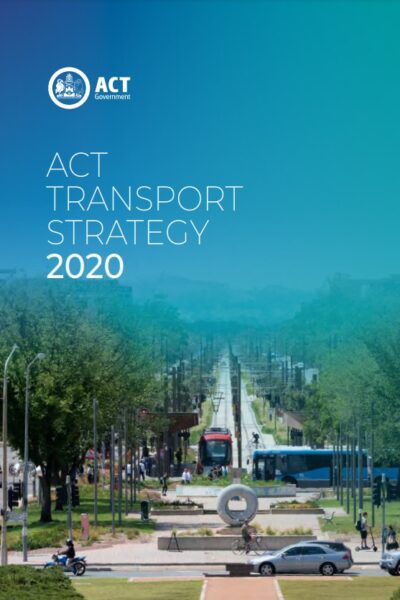 |
Transport for Canberra Transport Canberra and City Services The strategy for transport planning in the ACT to 2031 |
19/07/2021 | View |
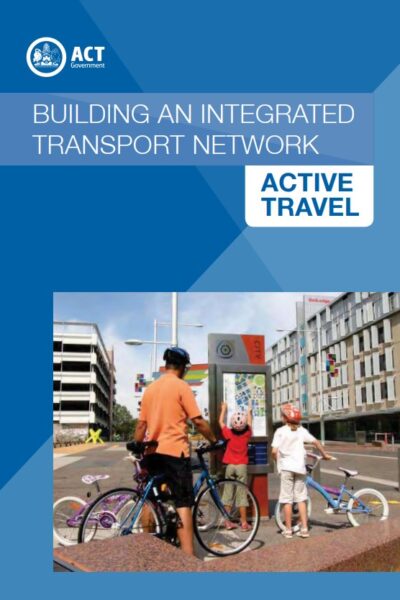 |
Building an Integrated Transport Network - Active Travel Transport Canberra and City Services The ACT Government's Building an Integrated Transport Network (the Active Travel Framework) recognises that walking and cycling are essential parts of Canberra's transport system. Through active travel initiatives, we're integrating walking and cycling into Canberra's overall urban planning, transport, health, environment and education systems. |
19/07/2021 | View |
 |
New Paths on New Projects Department of Transport, Victoria Every major new transport project – from North East Link to the West Gate Tunnel – now includes new or upgraded infrastructure for cyclists and pedestrians. |
16/07/2021 | View |
 |
Active Transport Victoria Department of Transport, Victoria The Victorian Government has committed $15.3 million in the Victorian Budget 2019/20 towards Active Transport Victoria projects to deliver key upgrades for safer walking and cycling. |
16/07/2021 | View |
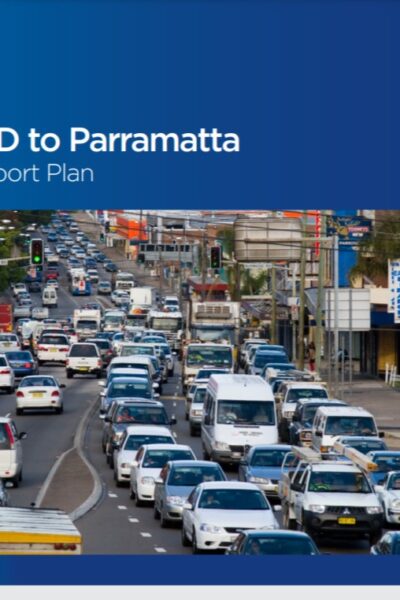 |
Sydney CBD to Parramatta Strategic Transport Plan Transport for NSW The Sydney CBD to Parramatta Strategic Transport Plan is a transport plan to improve the way people move along and around one of Sydney’s most important and busiest areas, the corridor between Sydney CBD and Parramatta. |
15/07/2021 | View |
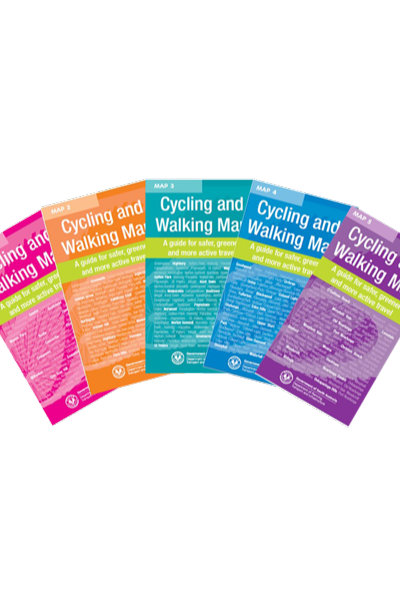 |
Cycling and Walking Maps Department for Infrastructure and Transport, South Australia Hard copy Cycling and Walking Maps will assist you to make active travel choices in Adelaide’s metropolitan suburbs. You can use the maps to plan safe walking or cycling routes to local shops, parks and services. |
15/07/2021 | View |
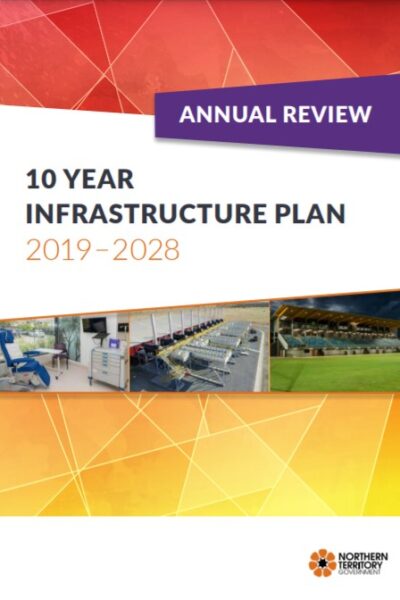 |
10 Year Infrastructure Plan 2019 Department of Infrastructure, Planning and Logistics, NT The reviewed Plan aims to help industry with its own planning and workforce management, and inform decision-making across all levels of government. Over the longer term, the Infrastructure Plan sets direction for planning and delivering infrastructure in the Northern Territory. |
13/07/2021 | View |
 |
Your Move Department of Transport, WA Your Move is an active lifestyle program that helps people find simple ways to get active and connected. Your Move offers information and support to make it easier to get active. |
07/07/2021 | View |
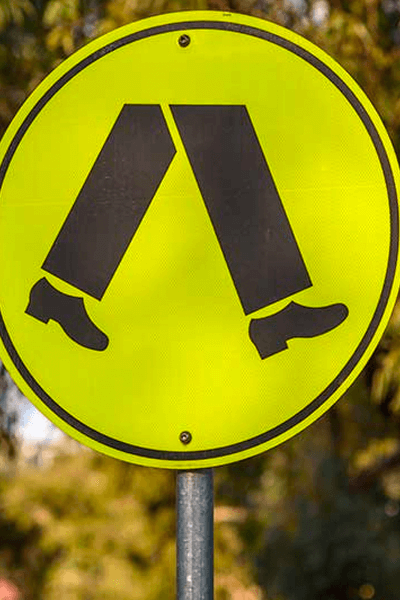 |
Australasian Pedestrian Crossing Facility Selection Tool Austroads The Pedestrian Facility Selection Tool is designed to help Australian and New Zealand practitioners select the most appropriate type of pedestrian crossing based on walkability, safety and economic outcomes. |
20/05/2021 | View |
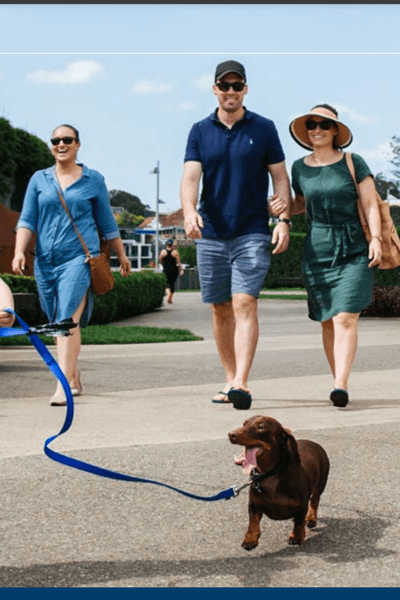 |
Queensland Walking Strategy Department of Transport and Main Roads, Queensland Queensland’s first walking strategy recognises the critical role that walking plays as part of a single integrated transport system accessible to everyone and as part of a healthy, active lifestyle for all Queenslanders. Includes Queensland Walking Strategy 2019-2029, Action Plan for Walking, Walking in Queensland Report. |
18/05/2021 | View |
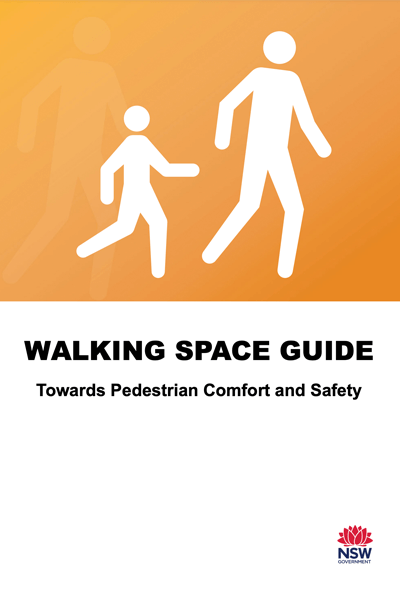 |
Walking Space Guide Transport for NSW The Walking Space Guide (Guide) provides a set of standards and tools to assist those responsible for Walking Spaces on streets, to ensure that sufficient space is provided to achieve comfortable environments which encourage people to walk. The Guide offers a clear, consistent set of standards and processes to be applied in designing, planning and implementing the amount of space to be provided according to the intensity of use. It is intended that designs are appropriate to the number of people using footpaths. This guide contains the method for carrying out a Walking Space assessment and offers guidance on how to understand the results. The guide includes an accompanying spreadsheet for recording data and calculating results. |
17/05/2021 | View |
